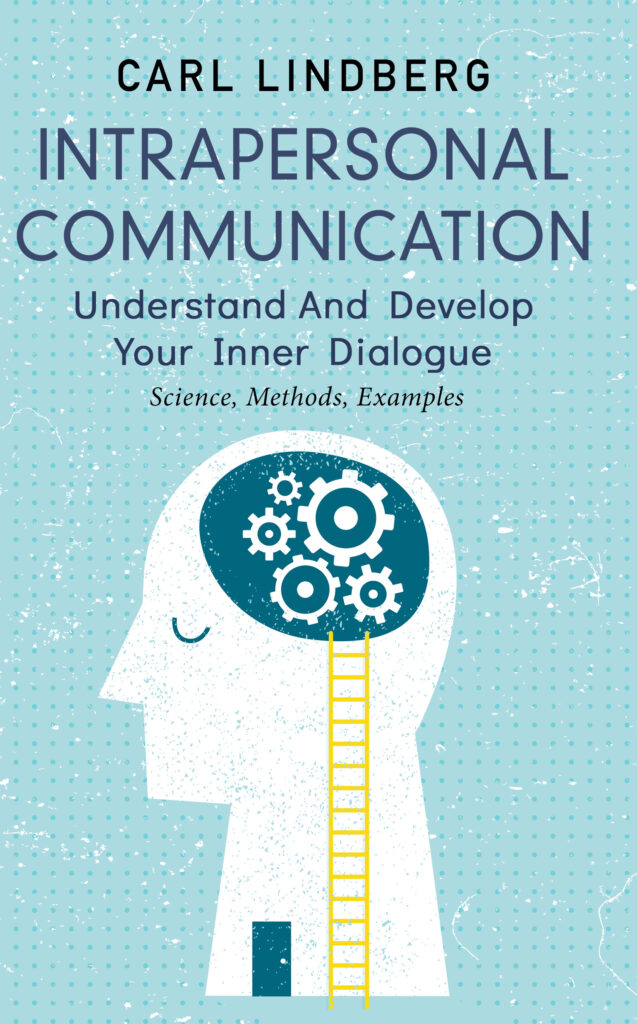The coaching leadership style is very important to me as a CEO. I truly value the coaching leadership style, both as a coach and as the one receiving coaching, and as a CEO, it has become one of the best ways to lead my team, since more direct styles are difficult in a multi-layered organization. The coaching leadership style becomes my way to develop each of the team members in the long term. In this article, you can read all you need to know about the Coaching Leadership Style as well as how to do self-coaching, among other things. Let us start with a quick summary.
What is the coaching leadership style?
Coaching Leadership is when a leader coaches team members to develop and improve over time. Coaching leadership builds engagement and focuses on improving employees to become better individuals and professionals in the long term. Coaching leadership can be difficult and time-consuming.
The article continues below. Feel free to watch our video on coaching leadership or continue reading below.
Contents
- What is Coaching Leadership?
- What Are the Elements & Characteristics of Coaching Leadership?
- What are the Pros and Cons of Coaching Leadership?
- When does the Coaching Leadership style work best?
- Coaching Leadership Examples
- Examples of Famous Coaching Leaders
- Further reading
- References on Coaching Leadership
What is Coaching Leadership?
“A coach is someone who tells you what you don’t want to hear [and] who has you see what you don’t want to see so you can be who you always knew you could be.” ~Tom Landry[1]
Usain Bolt is the fastest man alive. His success wasn’t a fluke but was the result of hours of practice led by his coach, Glen Mills. Bolt wasn’t lacking talent. However, Coach Mills was able to harness that talent and transform it into a skill that propelled Bolt to the top.
That’s what a coach does. Yet, we often limit coaching to sports despite its numerous applications in several areas where leadership is necessary. Coaching leadership is applicable to all areas and has the power to influence ordinary people to do extraordinary things in sports, business, institutions, sales, or anything else.
To describe the coaching leadership style in a bit more detail, we need to briefly mention another leadership theory, namely the situational leadership model. Behavioral scientist Paul Hersey and management expert Ken Blanchard conceptualized coaching leadership as a part of their Situational Leadership Model that they developed in 1969. (You can find the situational leadership model in our main portal here: leadership styles.) In more recent days, coaching leadership is also a part of the Daniel Goleman Leadership Styles based on Emotional Intelligence. (Join our newsletter and get some of my secret tips for each of the Goleman leadership styles.)
Hersey and Blanchard believed that managers shouldn’t stick to one leadership style. Instead, they should change their leadership style to leverage their team’s strengths. In other words, the leadership style should be adapted to the situation so that the team can be successful hence the name Situational Leadership Model.
The situational leadership duo also believed that managers displayed two types of behavior: task and relationship. Coaching leadership is a combination of both. Coaches use task behavior to direct a team member to engage in specific tasks. However, they also use relationship behavior to build a supportive relationship with a team member which allows the team member to develop a sense of autonomy.
Let’s use Tom Landry’s quote as a guide. A coach tells you what you don’t want to hear (task behavior) and has you see what you don’t want to see (task behavior) so that you can be who you always knew you could be (relationship behavior). The aim of a coach is to give some tough love that pushes a team member to realize his or her full potential.
Coaching Leadership is also explained by Daniel Goleman and his colleagues in the book Primal Leadership (Ad, Amazon). According to their definition, the coaching leadership style is a method of developing team members over time, even if the short-term results drop. This creates engagement, builds relationships, and improves the future output of the team member being coached. Read our article on the Six Leadership Styles by Goleman which also contains an explainer video on the entire framework. (The other five leadership styles in the Goleman framework are: democratic leadership, visionary leadership, affiliative leadership, commanding leadership, and pacesetting leadership. Join our newsletter and get some of my secret tips for each of the Goleman leadership styles.)
As I see it, the Coaching Leadership Style is loosely defined compared to many of the other leadership styles. As concluded in the literature section in a paper by Berg and Karlsen at BI Norwegian Business School, there are few concrete descriptions and research of the Coaching Leadership Style. One definition of coaching leadership style they list in their paper[2]:
“Coaching Leadership Style helps employees develop personally and with a long-term perspective. The leader supports and challenges colleagues, with the intent of helping them achieve individual development goals.” The source they gave is Meyers 2012.

What Are the Elements & Characteristics of Coaching Leadership?
Coaching is an art. It is complex and easy to fail at. Some key elements and characteristics are required in order to create a platform enabling success. Coaching leadership depends heavily on the leader’s ability to direct and support. Furthermore, the cause and effect can be unclear and confusing, making it difficult to calibrate the coaching style quickly.
Collaboration
A coach won’t create a successful team if the team doesn’t collaborate. It’s less about maintaining hierarchy and status and more about supporting what’s best for the team. Sure, the coach will give directions to help team members develop their skills, but this is still within a collaborative environment.
A key item in collaboration is to spend a lot of time with the people you coach and being clear on the purpose as well as the long-term goal of the coaching approach and how you will accomplish this goal together.
Good collaboration also reduces the need of being directive or autocratic – both negatively affecting any coaching leadership attempts. For tips on collaboration, consider the democratic leadership style as well. I even suggest you take my democratic leadership course where I teach you the secret techniques I use to drive engagement and performance in my job as a CEO. These tips have proven successful over many years.
Coaching Mind-set
Helping people become their best selves isn’t a simple task. A coach should think creatively about how to approach the coaching process so that each team member is developed and the team collectively achieves the best result. It’s a process of great commitment and sacrifice but the final outcome of this creative effort can be life-changing. Having a coaching mindset also requires that the leader believes in his or her capability in having a true impact on another individual. A coaching mindset also means that you as a leader truly and deeply care about the individual being coached. Coaching cannot be done on the surface and “for show”, it simply will not work, and it will not have any impact.
Scaffolding
Scaffolding[3] is a term used in education to describe “a variety of instructional techniques used to move students progressively toward stronger understanding and, ultimately, greater independence in the learning process.” Coaches inevitably become teachers as they guide team members towards honing their skills. The best coaches know that their guidance should gradually be reduced so that each team member develops a greater sense of autonomy.
Feedback
Team members won’t know how well or how poorly they’re doing unless they receive feedback. Constructive criticism is necessary for their growth. Coaches know how to use the task behavior component of coaching leadership to appropriately express their feedback. Team members, in turn, are receptive because they know that this feedback will help them improve their skills. If the individual being coached is not open to feedback, the coaching leadership style is very unlikely to work. It cannot be stressed enough that feedback is a core part of coaching leadership. Feedback is also an art form.

Self-Motivation
Coaching leadership is a two-way street. Coaches should be willing to sacrifice their time to motivate team members to hone their skills and become the best versions of themselves. However, team members should also have a high level of self-motivation especially as the coach begins to give them a greater sense of autonomy. It is very difficult to coach an individual who isn’t motivated to improve and grow.
Empathy and trust
As in so many other leadership styles, we come back to empathy being a pillar in leadership. In order to coach well, a leader needs to understand the person being coached on an emotional level. Through empathy, the leader can calibrate how to challenge and develop the individual and know when to reduce and increase pressure for instance. Empathy also enables gathering feedback through body language and the personal circumstances of the individual being coached. (Learn more about Empathy in our free E-book “7 Tips on How to Improve Your Emotional Intelligence”: Emotional Intelligence E-book.)
Coaching will be difficult, not to say impossible, if there is no trust. If the coaching leader does not trust the person being coached, there will be less empowerment, less belief, and less sincerity in formulating how the individual can grow personally as well as professionally. Lack of trust also breeds directive leadership, micromanagement, and other attitudes that are counterproductive to coaching.
Read this article for examples on how I use coaching leadership in my job as a CEO: Coaching Leadership Examples.
What are the Pros and Cons of Coaching Leadership?
This article would be incomplete without listing the advantages and disadvantages of coaching leadership.
Pros of Coaching Leadership
Here are five disadvantages of coaching leadership:
1. People enjoy working with coaching leaders
Coaches help people improve their skills so that they can perform at their best. Therefore, coaching leaders are able to create a work environment where people are highly motivated, eager to learn, and willing to collaborate. People actually enjoy being at work which should result in a low employee turnover rate.
2. Coaching leads to clear expectations
Team members don’t have to guess what’s required from them. With the coaching leadership style, their coach makes expectations clear and guides the team members towards developing the skills needed to accomplish their tasks as well as their long-term goals. Having that support makes meeting those expectations easier for the team members. (Commanding leadership can also provide clarity, it is another style in the six leadership styles by Goleman.)
3. Coaching gives an organization a competitive advantage
Coaching leadership requires a lot of personal mentorships so that each team member’s skills are developed appropriately. They, therefore, become more productive and are more likely to provide mentorship opportunities to others as they climb the corporate ladder. In essence, people who have a coaching leader often become coaching leaders themselves. This benefits the organization in the long term. A highly skilled workforce gives an organization a competitive advantage.
4. Coaching can identify weaknesses, and transform them into strengths
It may seem reasonable to argue that it’s best to focus on the strengths of a team and use them to the organization’s advantage. However, the weaknesses of a team can threaten everything an organization has built. This makes it very important for these weaknesses to be addressed.
Coaching leaders are able to quickly identify a team member’s weakness and implement a plan to help that team member transform that weakness into a strength or at least create awareness of the weakness so consequences can be limited. All team members have weaknesses. It’s all about identifying those weaknesses quickly and helping each team member improve in the best way possible.
Cons of Coaching Leadership
Here are four disadvantages of coaching leadership:
1. Coaching requires a lot of time and patience
Imagine providing personal mentorship to a team of 100 people. Not only is it time-consuming, but it also requires a lot of patience. Managers often have too little time to complete their assigned tasks much less to help each team member become skilled at what he or she should do. With this in mind, it is important that you set a scope before deploying the coaching leadership style. One approach can be to coach the coaches of the future to create a spreading effect not built on you being the sole coach of the organization. Prioritize who to coach. If you try to do everything at once, you might get zero impact in the end.
Lack of time can ruin the best of intentions – coaching leadership style simply requires a lot of one on one time.
2. Coaching is difficult
Few people are gifted at being effective coaches. It requires confidence, experience, and the ability to give meaningful advice. Those who do it ineffectively threaten the growth of an organization. There is hope though since you can learn how to become a better coach by using specific techniques and avoiding some known pitfalls.
3. Coaching is a two-way street
The coaching leadership style will only work if team members are committed to the process. Too much responsibility rests on the leader’s shoulders if they aren’t. There should be a strong commitment to collaboration and self-development early on in the coaching relationship. The person receiving the coaching must be motivated to develop and must be willing to receive feedback – both of these require that prestige can be put to the side. Not agreeing on the purpose and goal of the coaching process means you are set up to fail.
4. Coaching without good chemistry can impact progress
The team and leader should work well together in order for the coaching leadership style to be effective. The organization has to consider personality, experience, and its most pressing needs before deciding who would be the best fit for the role. Did you ever receive negative feedback from a person you do not respect? You probably either got defensive or disregarded that feedback. That is an example of where there is not a good fit for coaching leadership. Most people are also less likely to listen to a person they perceive as rude or disrespectful. Some personal similarities normally enable communication and other aspects that are essential for success with the coaching leadership style. (For tips on how to create rapport, check out our articles on Charismatic Leadership and Visionary Leadership, you can find them on our leadership styles main page.)
When does the Coaching Leadership style work best?
The coaching leadership style works best with a highly skilled leader and team members that are receptive to change. Coaching leaders can work with employees who are willing to improve their skills so that they can become better and more effective in their roles.
Remember the situational leadership approach – coaching leadership style is for specific situations. It needs to be applied when the time is right and when the circumstances for the coach and the individual being coached are right. In other situations, look to alternatives among the six leadership styles by Goleman.
A stressful crisis situation where decisions need to be immediate and consequences of error in judgment are severe would be a typical situation when coaching leadership style is not appropriate. After all, there is no room to fail, and time is not enough to develop the right skills for handling the situation. (Consider Commanding leadership instead.)
The coaching leadership style also tends to work best either with small teams or with a subset of a larger team where strong personal relationships can be developed. It becomes difficult to implement coaching leadership strategies with large groups since it is virtually impossible for the leader to connect on a deep and personal level with a large number of people due to time constraints. (Affiliative leadership is a related style that can also be used to build relationships.)
Look back at the crucial elements of coaching leadership that we described above. If most of those elements are in place or could be put in place for a certain individual, then I would say you have an appropriate situation to attempt the coaching leadership style in depth.

Coaching Leadership Examples
As a CEO, I believe you should always have a coaching leadership element in your repertoire. If you avoid telling people what to do and rather attempt to stimulate their minds so they find the solution themselves, they will start believing more in themselves and what they can achieve. Detailed descriptions with case examples can be found in this article: Coaching Leadership Examples.
Here are some coaching leadership examples in business:
- One of my managers coached me and showed genuine interest in my development and helped to grow my confidence.
- I use self-coaching a lot, to ensure I develop myself continuously by reflecting and frequent feedback collection.
- I coach others on a more simplistic day-to-day basis on more operational issues and troubleshooting
- I coach others on a long-term level in separate sessions where skills and experience are discussed rather than daily items.
Read more in this detailed article containing narrative examples of the above categories, all based on true events from my own leadership career: Coaching Leadership Examples.
Examples of Famous Coaching Leaders
In order to illustrate coaching leadership, we have picked two historical examples of leaders that were known to be coaching leaders.
Andrew Carnegie
Andrew Carnegie, 1835-1919, was best known for his wealth and philanthropy. However, he also played an instrumental role in Charles Schwab’s rise in the steel industry. Schwab’s career began when he worked as an engineer at the Carnegie Steel Company. Carnegie began mentoring and coaching Schwab when Schwab became a manager and this mentorship eventually propelled Schwab to being appointed President of the company.
Schwab[6] appreciated Carnegie’s enthusiasm and kindness as a leader. One of the many lessons he learned from Carnegie was not to blame workers for trivial faults. Instead, be kind to them; kindness pays for itself.
Red Holzman
Red Holzman, 1920-1998, was a highly regarded NBA coach in his era. He was best known for his work with the New York Knicks after successfully leading them to win two NBA titles. However, he also had a tremendous influence on another NBA coach – Phil Jackson. Jackson once said this about Holzman in an interview[4], “He is the reason why I am a coach. He had a great feel for people and how to get them motivated.”
Mike Breman[5] described five important lessons to learn from Holzman’s leadership style:
- Make your vision and performance standards clear from day one and regularly reinforce them.
- Do not overcomplicate the business; focus keenly on the fundamentals and practice until perfection is achieved.
- Let go and empower your team when you know your system has been fully accepted by them.
- Be humble and practice what you preach.
- Take a deep interest in each team member so that they’re still committed to the cause even when they’re not feeling up to it.
Further reading
I obviously suggest that you take my democratic leadership course which teaches techniques on participation, facilitation, listening, and driving engagement. All this knowledge is useful to a coaching leader as well.
Here are some selected coaching books for inspiration:
Feedback and Other Dirty Words(ad, amazon)
Unlocking Potential: 7 Coaching Skills (ad, amazon)
Challenging Coaching: Going Beyond Traditional Coaching (ad, amazon)
Besides reading and learning the other five of the six leadership styles by Goleman, you can join our newsletter and get some of my secret tips for each of the Goleman leadership styles. I also suggest you review the situational leadership model and the charismatic leadership style, both available in our leadership styles portal. I also suggest you get a free copy of our E-book on Emotional Intelligence ( Emotional Intelligence E-book) since it can help you to create rapport with your own coach or the people you want to coach.
Read about some situations when I use coaching leadership in my leadership career: Coaching Leadership Examples.
References on Coaching Leadership
https://online.campbellsville.edu/business/delegating-leadership-style/
https://online.stu.edu/articles/education/what-is-situational-leadership.aspx
https://www.money-zine.com/career-development/leadership-skill/coaching-leadership/
https://www.rightattitudes.com/2017/04/21/never-criticize-little-trivial-faults/
Primal Leadership, (Ad, Amazon) Daniel Goleman
[1] https://wellbeing.gmu.edu/articles/11237
[2] https://www.researchgate.net/profile/Jan_Karlsen2/publication/308271302_A_study_of_coaching_leadership_style_practice_in_projects/links/58b3f0de92851cf7ae91e3fc/A-study-of-coaching-leadership-style-practice-in-projects.pdf
[3] https://www.edglossary.org/scaffolding/
[4] https://www.nydailynews.com/sports/basketball/knicks/memory-red-holzman-serves-motivator-lakers-phil-jackson-article-1.374292
[5] https://www.huffpost.com/entry/red-holzman-leadership_b_3116468
[6] https://www.rightattitudes.com/2017/04/21/never-criticize-little-trivial-faults/





